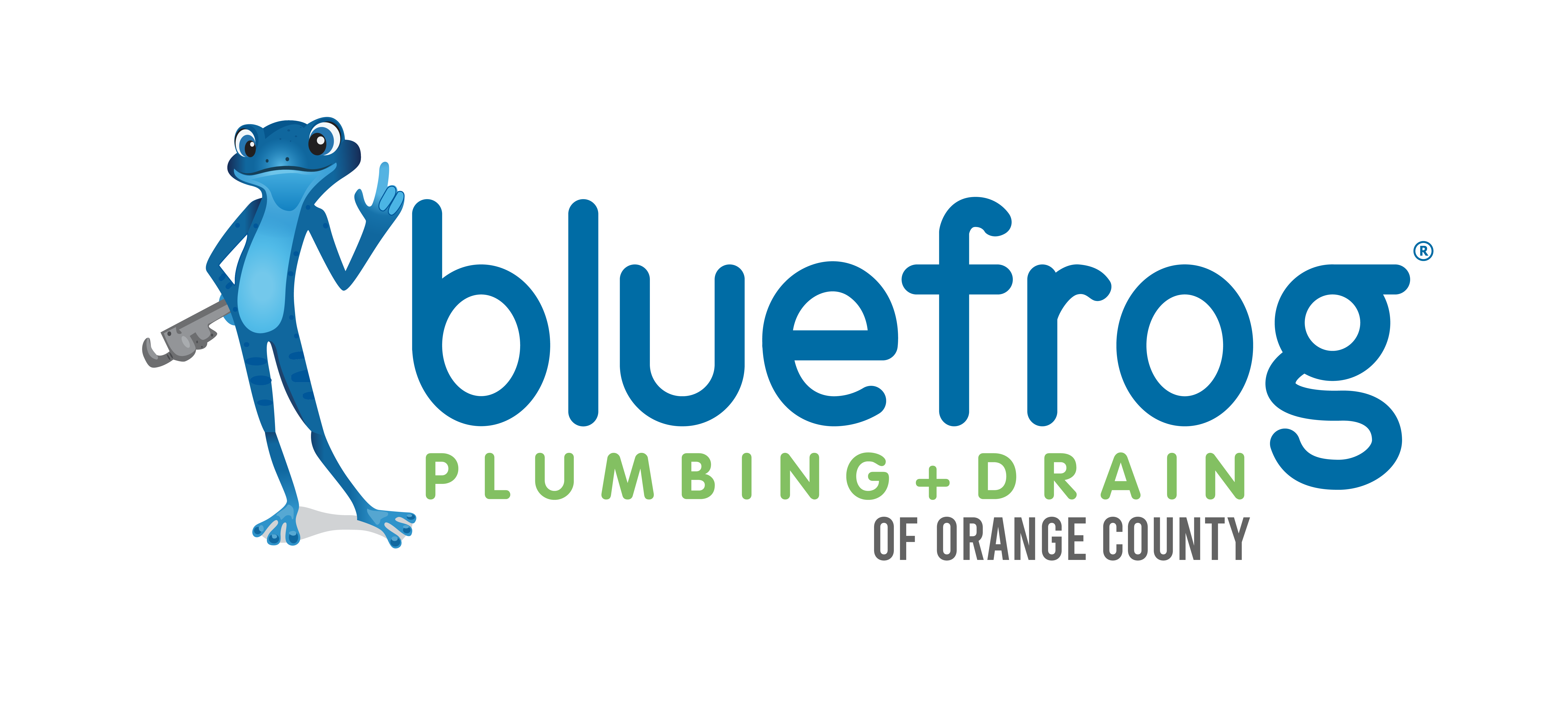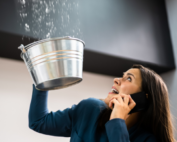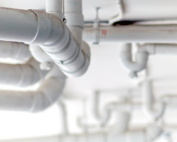Owning a home carries many responsibilities and caring for your plumbing system is one of those responsibilities. Unfortunately, it is not always obvious when there are plumbing issues lurking behind walls and ceilings. A broken pipe in the house could potentially go undetected for days or weeks causing hidden damage. If you hear unusual noises, see changes in the color of your water, have an unusually high water bill or find puddles of water on your floor you can be pretty sure you have a plumbing problem and quite possibly a broken pipe.
Stop the Water
The first step is to locate where the pipe is broken. Sometimes this will be obvious because you will see a stain on your ceiling or you will find water dripping from a pipe. If you are unable to discover the location of your leak, you may need to call in a professional. Either way, the next step is to immediately shut off the main water supply to the house. After locating the shut-off valve and engaging it, it is also a good idea to open up the faucet in one of your nearby sinks. The open valves will allow excess pressure to escape the system and drain all the water in the home quickly. It is imperative that you know the location of your shut-off valve prior to any emergency situations. You do not want to waste a minute searching for your shut-off valve as water is invading your home. Some smart homeowners install automatic shut-off valves which turn off the water automatically when sensors detect flooding. Another clever option is to add sensors to your already existing home security system. You can add temperature alerts that will notify you if temperatures fall below freezing and threaten to freeze your pipes. You can also add sensors that detect unwanted water. Anytime your temperature or water environment is in jeopardy the security company is alerted and they, in turn, notify you so appropriate action can be taken.
Frozen Pipes
Cold weather conditions can cause pipes to freeze and break. Pipes that are susceptible to freezing are usually located in poorly insulated areas such as basements, addicts, or crawl spaces. Literally turning up the heat on your thermostat or opening doors between heated and non-heated rooms can prevent this problem. Also, adding insulation to your walls and ceilings and installing insulated sleeves made especially for your pipes will help protect pipes from freezing.
Electrical Issues
If a pipe does burst and water is spewing everywhere it is important the water does not come in contact with circuit breakers, electrical connections, or sockets. Immediately turn off all electricity in your home and call a professional, especially if flooding has already occurred and it prevents you from safely reaching your electric circuit breaker box.
Patch the Hole
Unless you happen to have a plumber friend on speed dial, it is most likely that you will have to wait several hours or even days before a plumber can get to your home. If you are unable to locate your shut-off valve you may need to do some sort of temporary fix to stop the water from damaging your home. There are temporary patching materials available at the local hardware stores, items such as epoxy putty, electrical tape, or a sleeve clamp. In a real emergency, a piece of rubber can be clamped over the break site on any pipe. Adding a block of wood over the piece of rubber you can clamp it tight and equalize the pressure to quickly stop the leak.
Problems occur in every home and plumbing problems are almost guaranteed. Knowing some basic emergency stop-gap measures can mean the difference between a small incidental leak and a basement full of water. Early preparation can be a huge plus and may be just what you need to keep your home in tip-top shape!
Are you facing issues with your plumbing pipes? Contact us today! We are plumbing experts in Newport Beach, Orange County, and the surrounding areas.

Slab Leaks: A True Plumbing Emergency
Home building following World War II was aggressive, so many houses were built on cement foundations to reduce the time it took to build them and to keep costs at a minimum. They were
How To Extend The Life Of Plumbing Pipes
A plumbing system consists of a complicated series of pipes, fixtures, and appliances that provide the infrastructure to run a well-functioning home. In this article, we will focus solely on plumbing pipes and ways
3 Silent Signs You Have A Plumbing Problem
Some plumbing issues announce themselves with a fury such as a drain backing up with sewage or a burst pipe, while others remain silent and destructive. In this article, we will reveal 3 signs



